China's first commercial manufacturer of gallium nitride (GaN) electronic devices, Dynax Semiconductor, Inc., announced the broadband, high-efficiency GaN power amplifier tube DX1H3438140P for 5G mobile communications. From 3.4 GHz to 3.8 GHz, it has achieved world-leading performance in terms of efficiency, gain, broadband characteristics and linearity. And the power amplifier tube is specially optimized for the wireless communication base station, and is easy to design into a broadband power amplifier of the Doherty architecture, which is very suitable for the macro station RRU with an average output power of 20 W. Suzhou Nengxun is releasing the potential of domestic GaN to provide a series of outstanding GaN devices for the market.
China's 5G mobile communication system has completed the first phase of testing for key technologies such as large-scale antenna, multiple-access multi-carrier, high-band communication, and also verified user experience rate up to Gbps, millisecond end-to-end delay, and Diversified scenarios such as square kilometers and millions of nodes; operators have launched the second phase of trials to develop wireless air interface and network technologies for mobile Internet, low latency, high reliability and low power consumption. The R&D and testing of the program, with a test frequency of 3.6 GHz, is planned to be completed by the end of 2017 to prepare for the opening of the 5G communication experiment network in 2018.
In order to achieve high-speed and large-capacity user experience, it is bound to broaden the signal bandwidth. In a series of planned frequency bands, the 3.4 GHz-3.8 GHz band is the first to become a global hotspot frequency, which has attracted the attention of the global mobile industry. Major equipment vendors focus on developing macro stations or integrated small base stations for 3.4 GHz-3.8 GHz. For example, Nokia's TD-LTE 3.5GHz 8T8R macro station RRU and 4T4R low-power RRU and integrated small base stations. Both Ericsson's Macro Station Macro Radio 2218 and Micro Station Micro Radio 440 are focused on 3.4 GHz-3.8 GHz applications. Huawei and ZTE have also introduced multi-carrier broadband RRUs based on 3.4 GHz-3.8 GHz, with carrier signal bandwidths exceeding 150 MHz.
Manufacturers of major RF power amplifiers are also scrambling to innovate and continuously release devices that meet market demands. At present, the performance defects of the current mainstream silicon-based LDMOS power amplifier tubes in frequency and efficiency make it difficult to meet the high-frequency and high-efficiency requirements of the 5G system, and gradually lose its dominant position in the base station power amplifier market. GaN effectively reduces the junction capacitance with its inherent high power density, thereby increasing the bandwidth and meeting the video bandwidth requirements of multi-carrier systems for power semiconductor devices.
Huawei took the lead in mass-using GaN RF power tubes, which not only optimized the system's RF performance, but also simplified the thermal design, reduced the size and weight, facilitated engineering construction and network optimization, effectively promoted the development of the industry, and opened the GaN material. A new era of commercial third-generation RF power amplifier tubes.
In such a good market environment, Nengxun Semiconductor came into being, dedicated to the development and production of GaN RF power devices. It is the only IDM company in China with independent GaN FAB plants and production capacity except for research institutes. Provide customers with a variety of cooperation models from epitaxial materials, die design to device production. The products are continuously launched and gradually recognized by the market and customers.
For the 3.4 GHz-3.8 GHz broadband multi-carrier RRU project, the company has developed a number of GaN power amplifier tubes, combined with high-efficiency linearization technologies such as Doherty and DPD, to provide customers with a power amplifier solution of 20 W or more.
First of all, the power amplifier is an extremely important part of the communication transmission system. Its output power capability and leakage efficiency will have an important impact on the entire communication system. From the comprehensive performance, the GaN RF power amplifier tube becomes a high frequency. The most suitable choice for high power and broadband high efficiency power amplifier modules. GaN not only compensates for the lack of high-frequency bandwidth and efficiency of LDMOS, but also improves the low-frequency power capacity of GaAs. The advantages of GaN in reliability make it the preferred power amplifier technology for 5G communication.
Moreover, in recent years, European and American semiconductor companies have tightened the blockade of the domestic power amplifier tube market, and domestic GaN enterprises have been highly sought after by the market and accelerated development.
As the first commercial GaN electronic device manufacturer in the country, Nengxun High Energy Semiconductor Co., Ltd. has released a new GaN RF power amplifier tube DX1H3438140P for the needs of the market and base station customers. The power amplifier tube can support the frequency band from 3.4 GHz to 3.8 GHz. With its excellent broadband performance, customers can use the same broadband power amplifier tube in this frequency band instead of the original two or even three power amplifier tubes. The power amplifier tube operates at 48 V and has good linearity, power density, efficiency, and broadband characteristics in this band. When used at the board level, external matching is easy to implement and debugging is simple.
The power amplifier tube is designed as a Doherty architecture, which is very suitable for base stations with an average system power of 20 W. The Doherty architecture power amplifier designed with this power amplifier tube can support a wideband signal of 160 MHz, and works well with a wideband DPD system. After DPD correction at normal temperature, the linearity can reach -50 dBc @ 45.4 dbm, showing A perfect RF closed loop performance. Figure 1 shows the picture of the power amplifier tube:
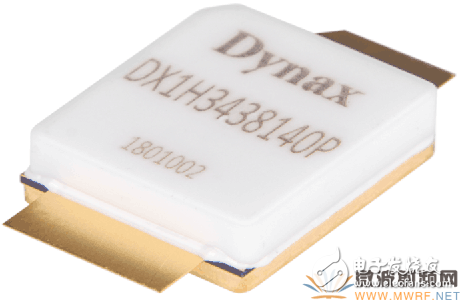
Figure 1, DX1H3438140P power amplifier tube picture
Below we have a single tube and Doherty performance test for this power tube:
First, Load Pull performanceTable 1 shows the performance of the load pull test of the power amplifier tube DX1H3438140P at 3.4 GHz-3.8 GHz.
Load Pull Performance Show (3.4 GHz-3.8 GHz)
Freq (GHz) 3.43.63.8
Pout (dBm) 51.6551.6151.58
Gp (dB) 19.820.119.3
DE (%) 697168
Test condition: Vds=48 V, Ids=400 mA
Pulse Width = 100 μs, Duty Cycle = 10 %
Table 1, DX1H3438140P Load Pull test results
Second, 3.6GHz Class AB debuggingThe amplifier's drain voltage Vds is 48 V and the quiescent current Idq is 400 mA. The PCB board used was Rogers 4350B. Figure 2 shows the Demo picture before debugging.

Figure 2, DX1H3438140P Demo picture
2.1, small signal performance
The amplifier has a return loss S11 of less than -10 dB and a bandwidth greater than 400 MHz from 3.4 GHz to 3.8 GHz. At 3.6 GHz, the small signal gain is greater than 19 dB. Figure 3 shows the result curve of small signal debugging.

Figure 3. Small signal performance after debugging of DX1H3438140P
2.2, pulse saturation power test
After debugging, the amplifier has a saturation power of 51.7 dBm, a saturation efficiency of 67.3 %, and a power gain of 19.3 dB at a power backoff of 7.5 dB. Figure 4 shows the results of the large signal pulse test.
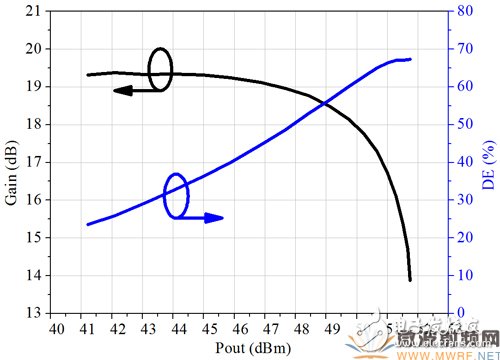
Figure 4. Pulse test performance after debugging of DX1H3438140P
2.3, DPD linearity test
The amplifier exhibits excellent linearity performance after DPD correction. The test signal is WCDMA 3GPP test model 1, 64 DPCH, 45% clipping, PAR = 7.5 dB @ 0.01% Probability on CCDF. With a power backoff of 8 dB, the corrected ACLR can reach -58 dBC. Figure 5 shows the results of the DPD test.

Figure 5. DPD performance after debugging of DX1H3438140P
Third, Doherty performanceIn order to achieve the perfect combination of power amplifier linearity and efficiency, the company has developed broadband Doherty power amplifier boards of 3.4 GHz-3.6 GHz and 3.4 GHz-3.8 GHz. The amplifier uses a 1:1 symmetric Doherty architecture to represent its optimal broadband and linearity. For the current signal PAR 7.5 dB commonly used in communication systems, we use 8 dB of saturated power back-off as its average output power to demonstrate its performance at the time of rollback. For details, reference may be made to the efficiency curves in FIGS. 6 and 7.
3.1, 3.4 GHz-3.6GHz Doherty pulse power test
Table 2 shows the performance parameters of the 3.4 GHz-3.6 GHz Doherty power amplifier with a bandwidth of 200 MHz. The saturated output power is greater than 53.9 dBm. When the saturation power is backed by 8 dB and the average output power is 46 dBm, the efficiency is 42.5 %. Above, the gain is greater than 15.1 dB. The Doherty amplifier's power performance is superior, making it ideal for RRU amplifier applications in the 20-30 W range.
3.4 GHz-3.6 GHz pulse characteristics
Supervisor quiescent current 400 mA, peak tube gate voltage -4 V
Pulse Width = 100 μs, Duty Cycle = 10 %
Frequency (GHz) 3.43.53.6
Saturated power (dBm) 54.153.953.9
Efficiency @46dBm (%)42.544.644.0
Gain@46dBm (dB)15.715.515.1
Table 2. 3.4 GHz-3.6 GHz Doherty Power Amplifier Test Data
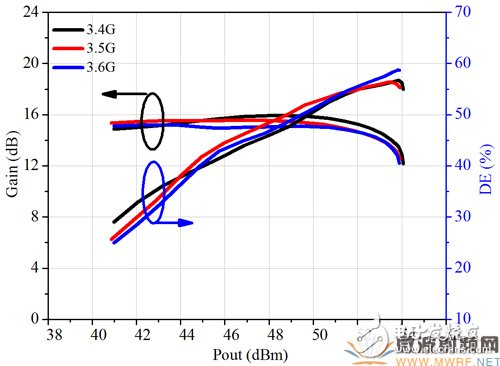
Figure 6. 3.4 GHz-3.6 GHz Doherty power amplifier pulse test performance
3.2, 3.4 GHz-3.8GHz Doherty pulse power test
Table 3 shows the performance parameters of the 3.4 GHz-3.6 GH Doherty power amplifier in a 400 MHz bandwidth with a saturated output power greater than 53.9 dBm and an efficiency of 38.5 % at a saturation power back-off of 8 dB and an average output power of 46 dBm. Above, the gain is greater than 14.7 dB.
3.4 GHz-3.8 GHz pulse characteristics
Supervisor quiescent current 400 mA, peak tube gate voltage -4 V
Pulse Width = 100 μs, Duty Cycle = 10 %
Frequency (GHz) 3.43.63.8
Saturated power (dBm) 53.953.9854.2
Efficiency @46dBm (%) 414338.5
Gain@46dBm (dB) 15.815.514.7
Table 3. 3.4 GHz-3.8 GHz Doherty Power Amplifier Test Data

Figure 7. 3.4 GHz-3.8 GHz Doherty power amplifier pulse test performance

Figure 8. 3.4 GHz-3.8 GHz Doherty Demo picture
3.3, broadband DPD linearity test
Figure 9 shows the linear result of the 3.4 GHz-3.6 GHz Doherty power amplifier wideband signal designed by the company. The test signal is LTE 160 MHz signal with a peak-to-average ratio of 7.5 dB. When the output power of the amplifier port is greater than 45 dBm, the corrected linearity can still be lower than -50 dBc. Figure 10 is a spectrum diagram of the two carriers on the right after correction of the 160 MHz signal (11000011 mode).
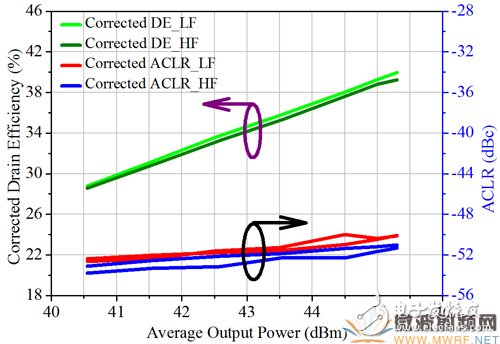
Figure 9. DPD correction results for wideband LTE signals
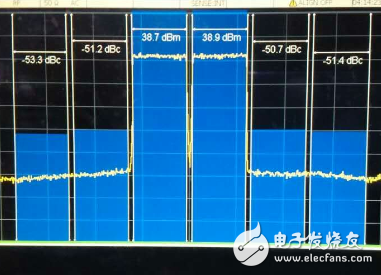
Figure 10. Spectral diagram of a 160 MHz wideband signal
Fourth, summaryFrom the test performance of Class AB or Doherty, the DX1H3438140P has outstanding performance in terms of bandwidth, power, efficiency characteristics and linearity. This fully demonstrates the company's advanced material growth and die design capabilities, fine process control, and stable and reliable production capacity.
About Dynax Semiconductor, Inc.
Founded in 2007, Nengxun Semiconductor is a high-tech enterprise founded by overseas returning teams supported by China's first “Thousand Talents Programâ€.
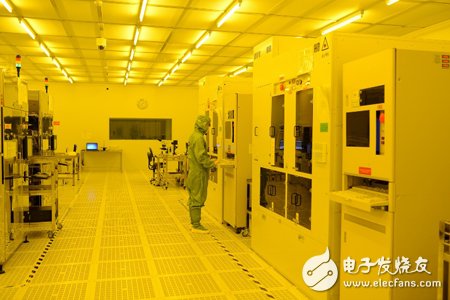
The company is headquartered at No. 18, Chenfeng Road, National High-tech Zone, Kunshan, Suzhou, Jiangsu Province, and has established R&D centers in Xi'an and Nanjing. Nexun Semiconductor is committed to the industrialization of energy-efficient gallium nitride (GaN) power semiconductor materials and devices, and is the first to build China's first commercial GaN electronic materials and devices factory in Kunshan High-tech Zone, Suzhou.
Nexun Semiconductor has independently developed GaN material growth, device design, manufacturing process, packaging and reliability technology. At present, it has more than 150 Chinese and international invention patents, and its technical level and product indicators have reached the international advanced level. The core team of the company has a wealth of overseas experience and currently maintains a world record for many GaN technologies.
We are able to follow the customer's needs and release a series of GaN RF power amplifier tubes below 6 GHz, 5 W to 300 W, and meet the multi-mode multi-band requirements of customers' TDD and FDD systems, bringing excellent broadband to customers. Linearity and efficiency characteristics.
The company's mission is to become a leading supplier of high-energy semiconductors. While maintaining its technological leadership, Nexun Semiconductor will also leverage its local strengths to establish service standards that respond in a timely manner, provide deep assistance, and enhance competitiveness, and serve customers wholeheartedly.
We have many king of Casters,such as trash container caster,material handling equipment caster,industrial equipment caster,platforms trucks caster,cargo dollies caster,institutional equipment caster,heavy duty carries caster,support equipment caster,moving dollies caster,furniture dollied caster,medical caster,central lock casters,cabinet casters and so on.
According to the load classification,casters are divided into light,medium,and heavy. according to the use of classification,casters are divided into civil and industrial use.
Industrial casters are mainly used in factories or mechanical equpment,the product as a whole has high impact resistance and high strenth.
Medical casters in order to meet the requirements, have the characteristics of light operation,flexible steering,quiet wear resistance and so on.
Supermarket casters are portable and flexible to adapt to the movement of supermarket shelves.
Furniture casters are mainly used to meet the needs of low center of gravity and high load of furniture.
casters according to material classification mainly has artificial glue,polyurethane,plastic,nylon,steel,rubber and so on,to adapt to the application of different places.
Caster Wheel,Rubber Caster,Swivel Caster,Wheel Caster,Casters
BAODING JIMAOTONG IMPORT AND EXPORT CO., LTD , https://www.chinagroundscrew.com